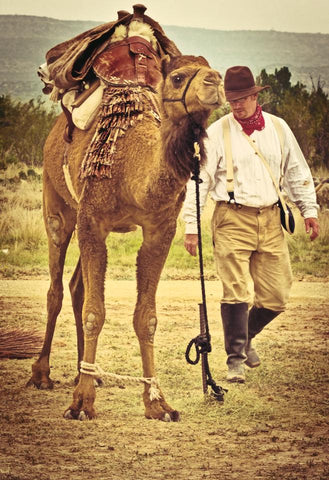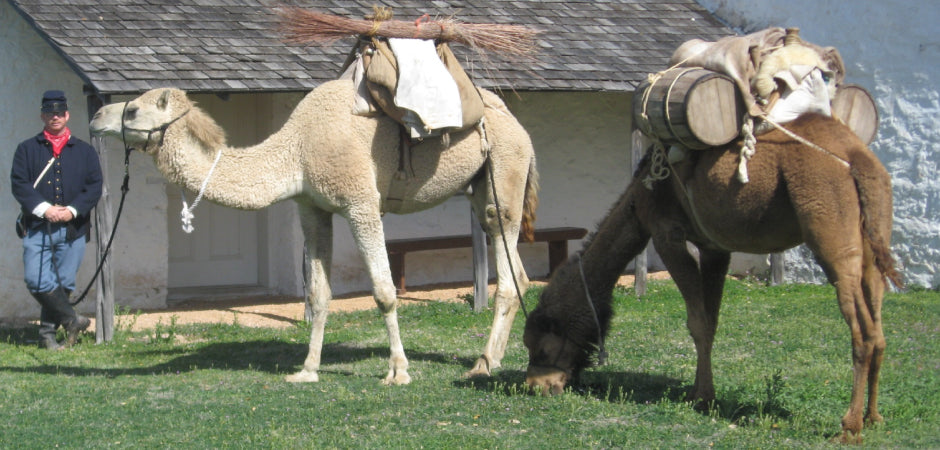

Between forty and fifty million years ago an ancestor of what we now recognize as the camel roamed a surprising landscape: like the horse,
the camel’s origins are uniquely North American. Hunted to extinction, though, by Paleolithic man, native camels disappeared from this continent only nine thousand years ago. Modern man began utilizing the camel for milk, meat and labor some forty-five hundred years ago in the deserts of the Middle East (where it had spread over the ages), but it wasn’t until the US Army saw an increased need for travel in the American deserts that the camel would return to its ancestral homeland. Following the Gold Rush of the 1840s, and just prior to the US Civil War, camel caravans were a common sight between San Antonio and Los Angeles. Congress had appropriated $30,000 for the purchase and importation of camels in 1855 and both Bactrian (two humps) and Arabian (one hump) camels were used. Purchased in Algeria, Tunisia, Egypt and Turkey, seventy-five camels were imported to America and put to work packing military supplies. If not for the Civil War, and the connection of Confederate President Jefferson Davis (an early advocate for the camels), perhaps the camel might have better caught on. Commercial shipments totaling as many as four hundred camels (eclipsing the government’s meager numbers) arrived in Texas, Alabama and California, but the West was won on horseback and camels never gained a foothold. Today America is home to roughly three thousand camels, most in private hands.
